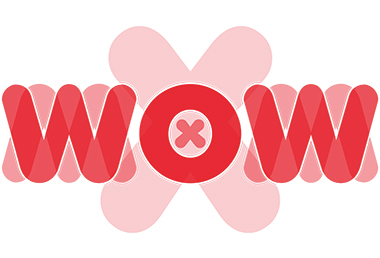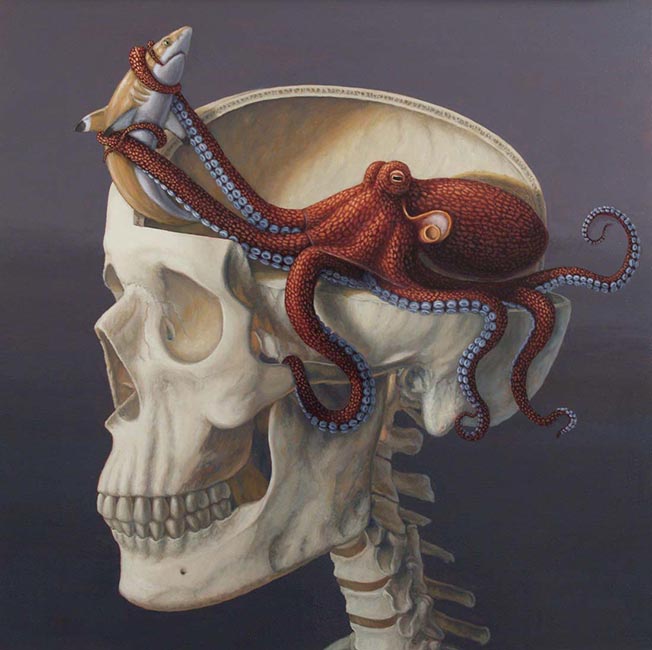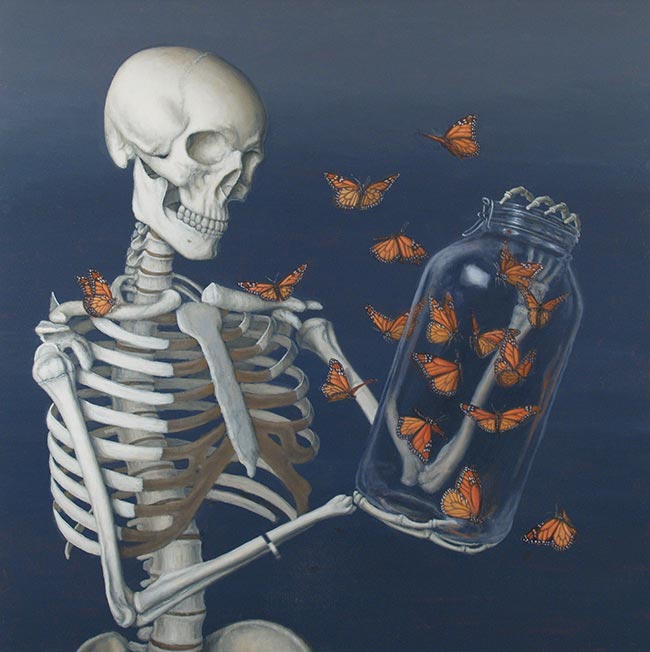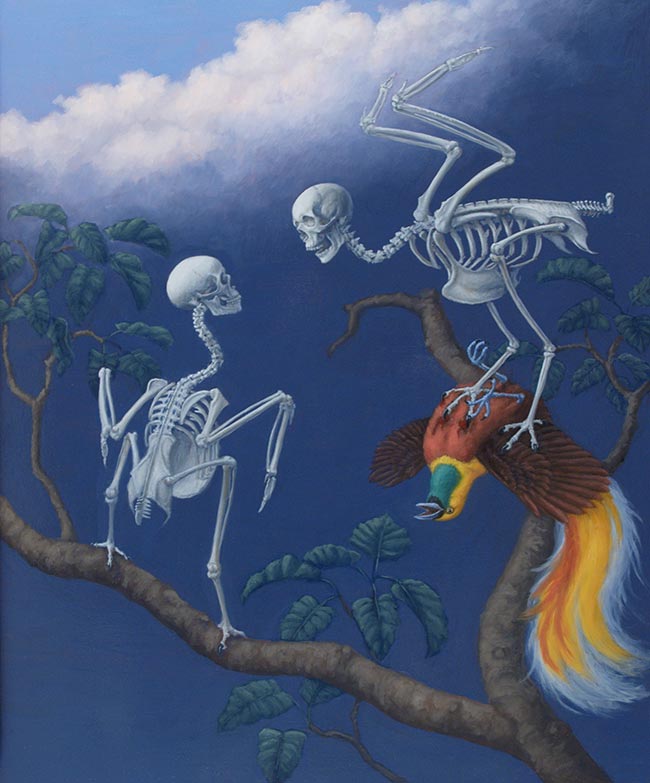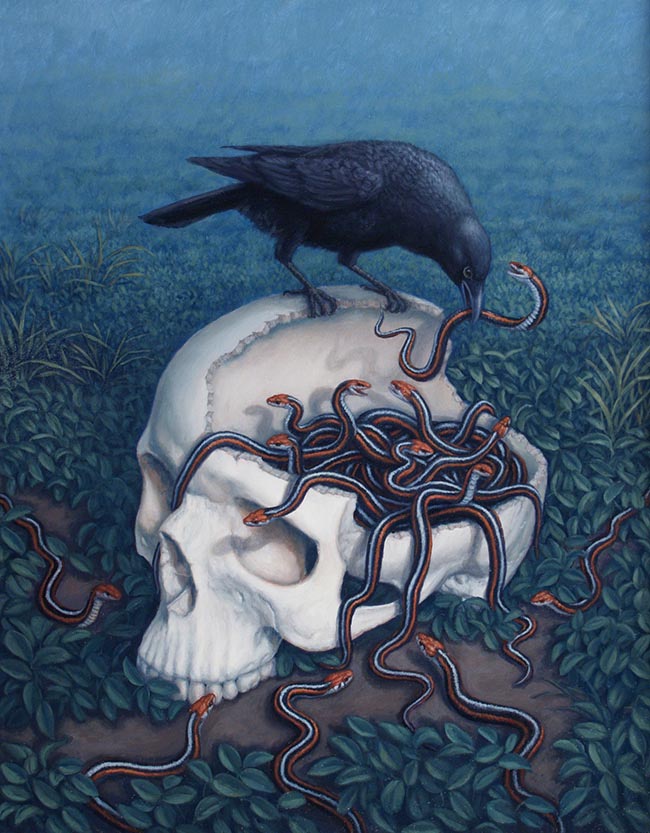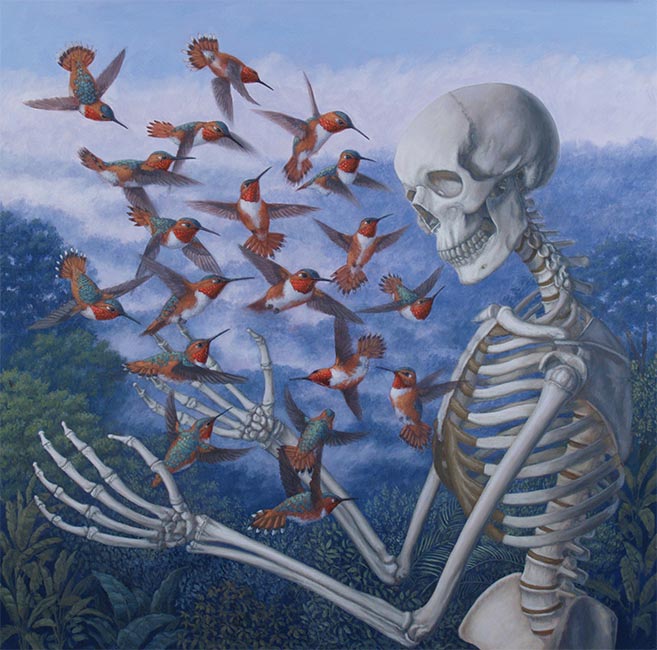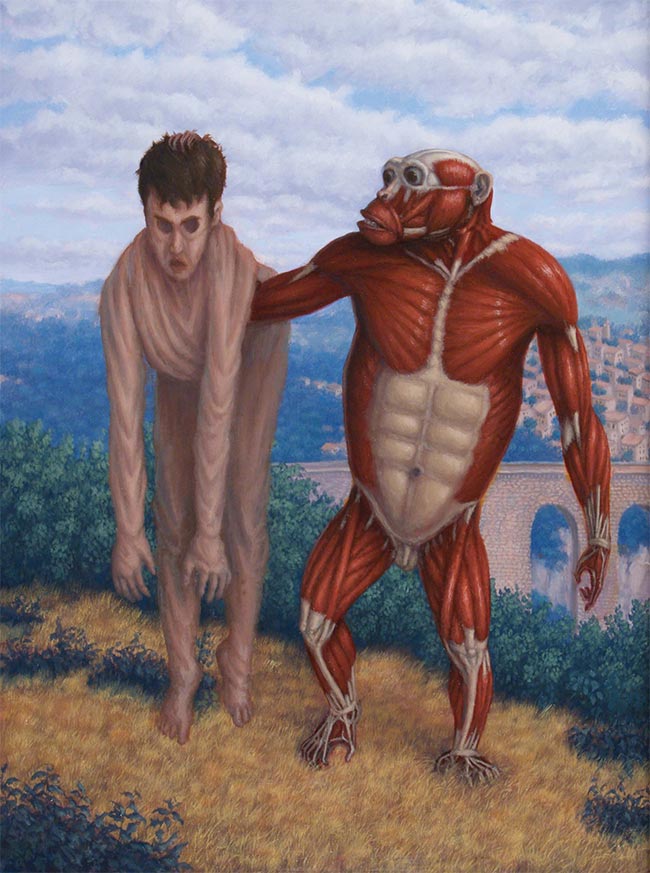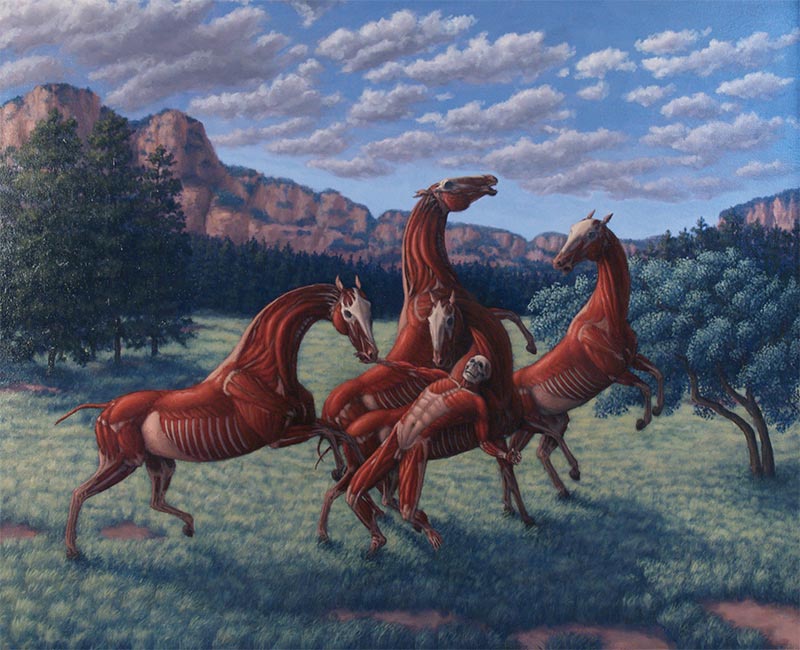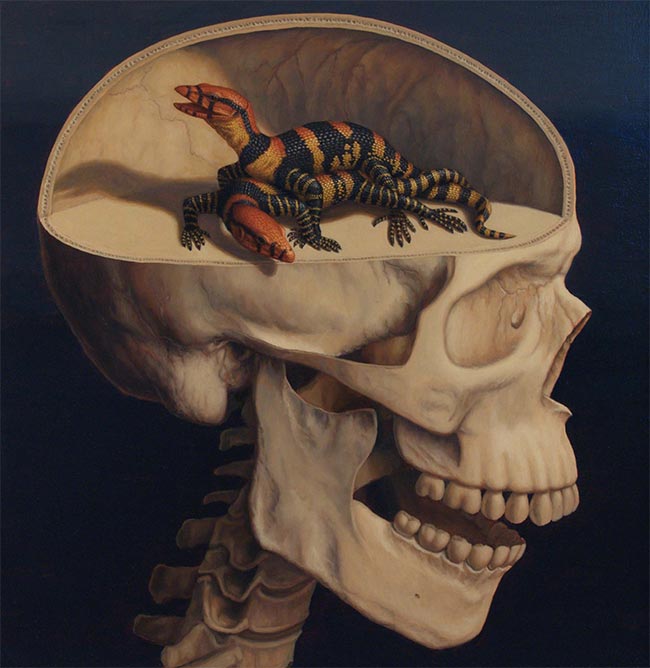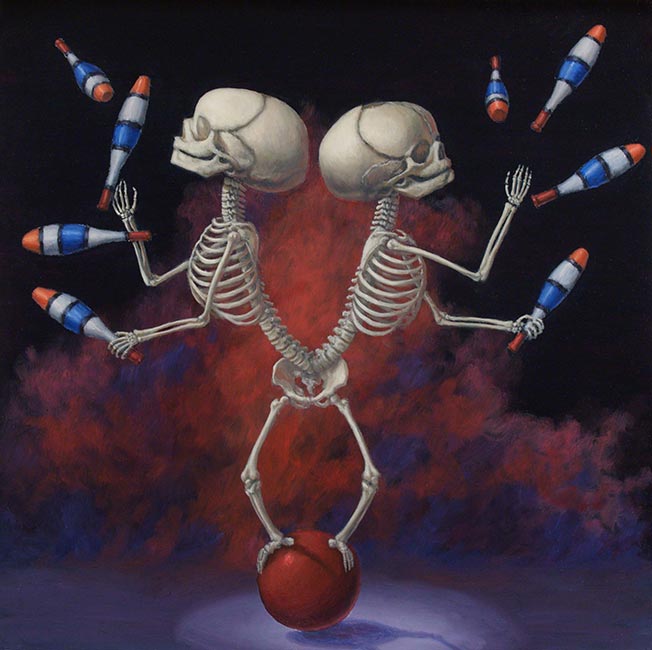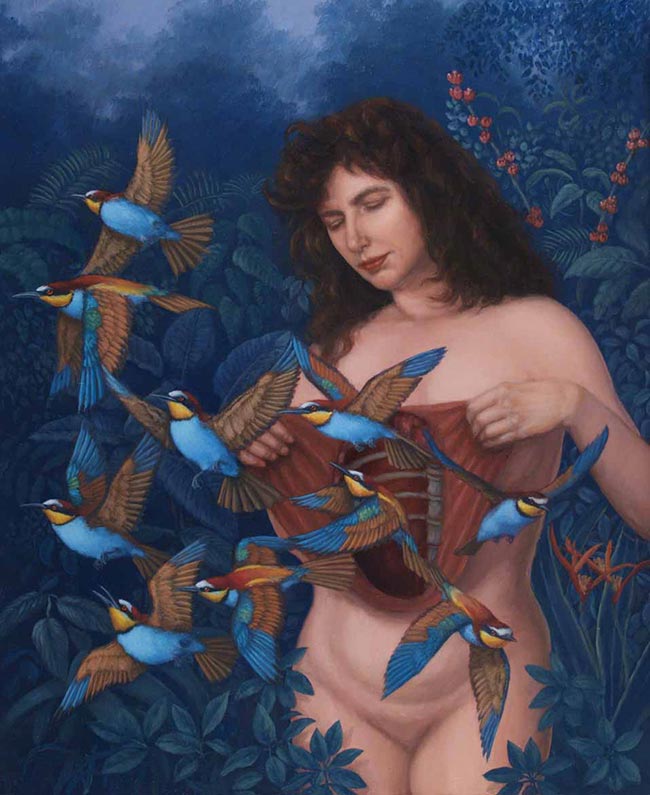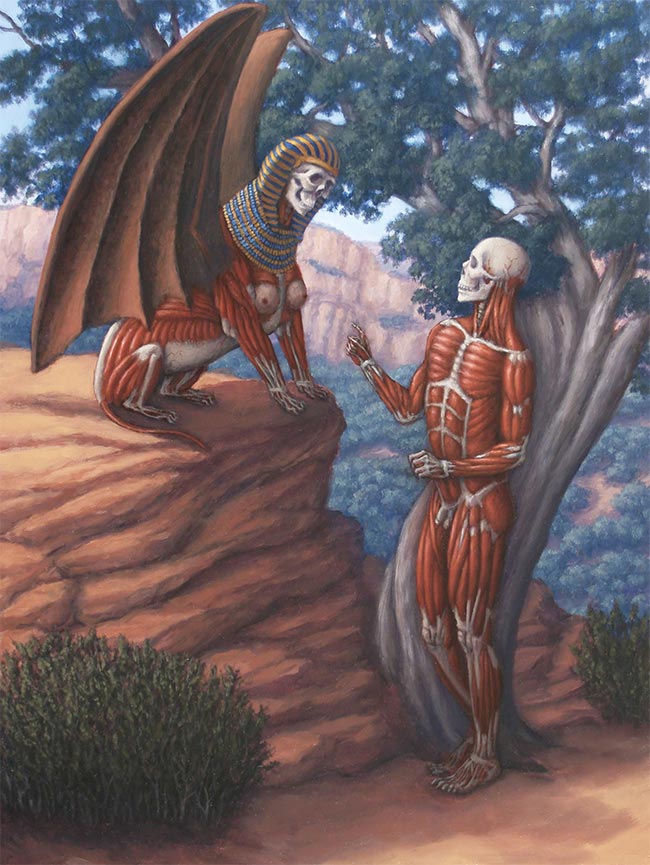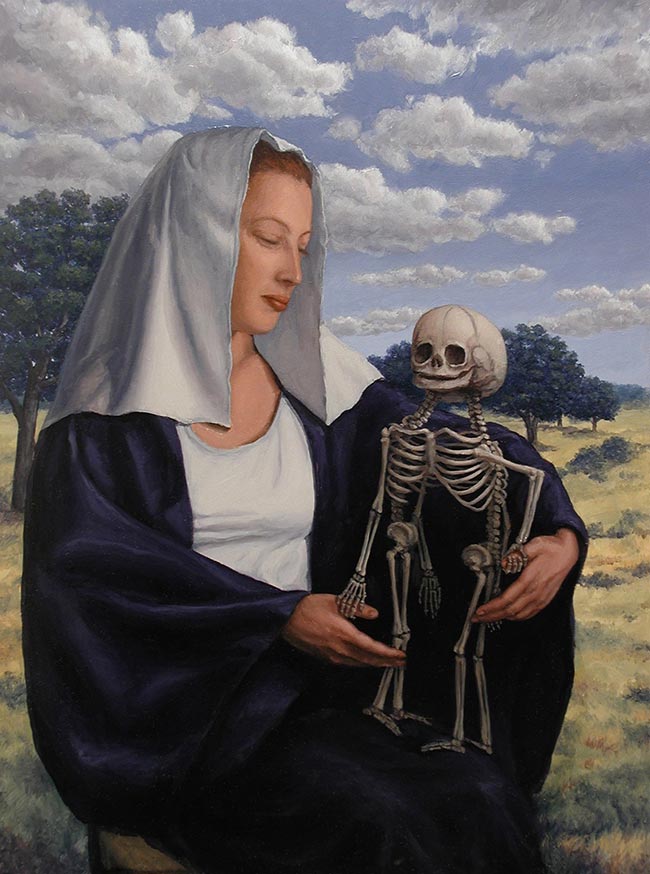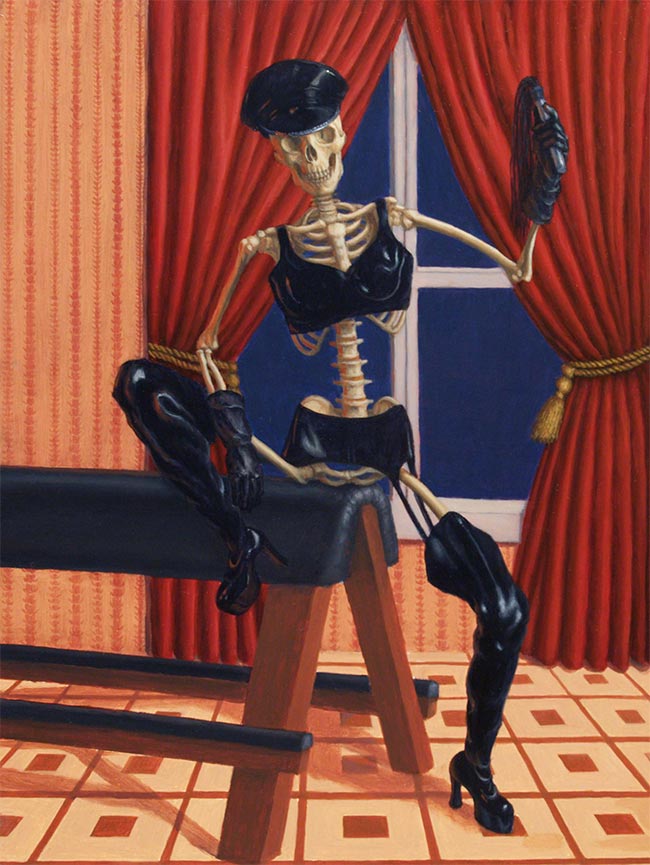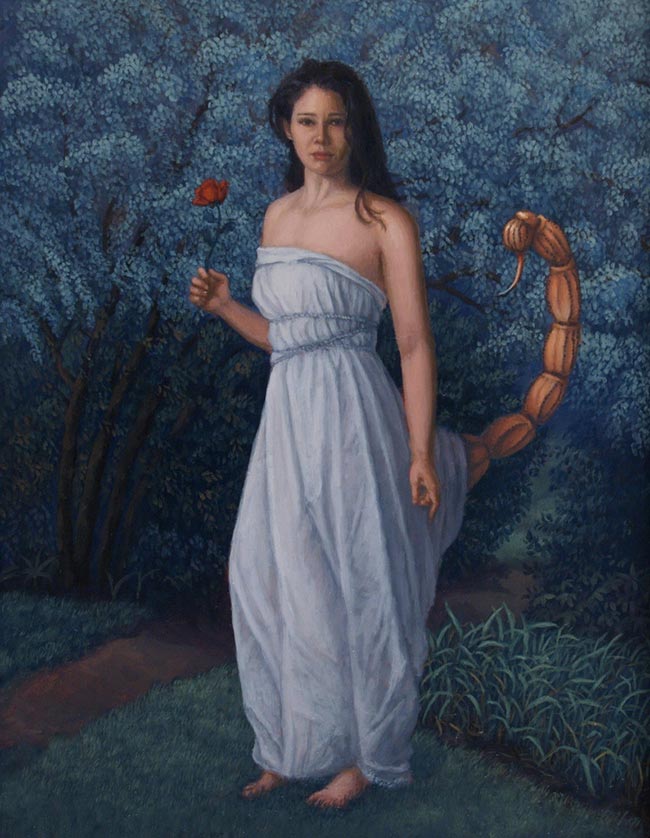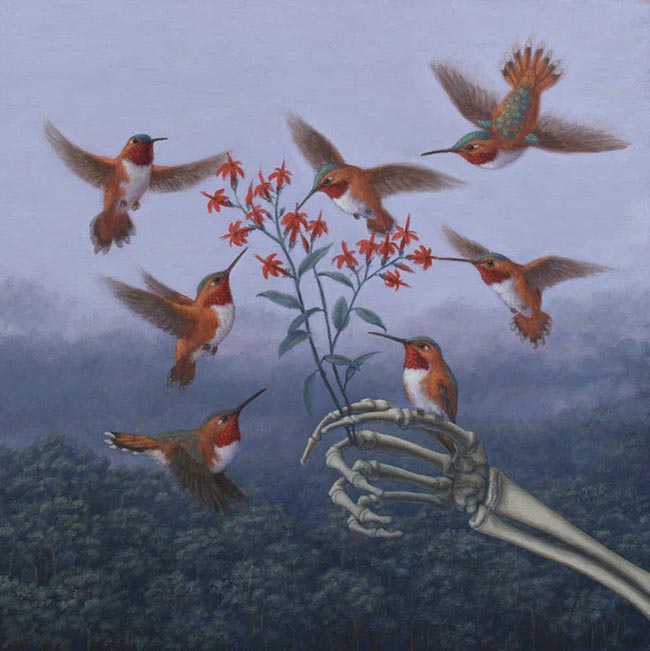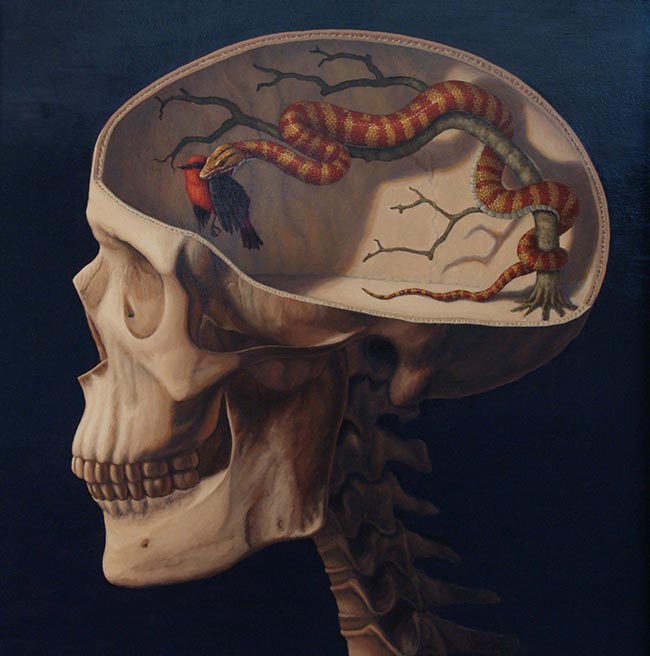Sandra Yagi’s art reaches far beyond the anatomical precision with which her subject matter is rendered. Driven by an obsessive curiosity and inspired by her deep fascination for the natural sciences, mythology, contemporary culture and the macabre, Yagi explores the roots of human folly and our often upsetting relationship with nature. She utilizes a sophisticated symbology and well researched facts to construct narratives which expose humanity’s desire to make sense of our existence and contemplate our own mortality, but which ends in our ultimate failure to co-exist in harmony with our surrounding environment and remain sensitive to the mortality of our fellow members of the animal kingdom. The scenarios Yagi creates may appear fantastical and surreal, they are however, always rooted in our harsh reality.
Sandra lives and works in San Fransisco. She has exhibited her work extensively, and over the years has built up a very impressive list of clients, including the likes of Axl Rose, Ben Stiller, and Lee Unkrich.
WOW x WOW are excited to be able to bring you this interview with Sandra, in which she discusses her work and gives insight into her inspirations and motivations.
Hi Sandra, thanks for taking the time out to join us for a chat. Before we get going, can you tell us a little about where you live, your studio and the artistic community in your area?
I live and work in San Francisco. My studio is in the South of Market neighborhood, which has been profoundly affected by the influx of technology workers. Surrounding the studio are new high-rise apartment buildings and office buildings, which house companies such as Twitter and Uber. I live nearby the studio, in the Castro district. The demographics here are rapidly changing due to an influx of technology workers, though there are still remnants of the original populace: working people, gays, lesbians, transgender folks, and artists. I feel very fortunate to be in San Francisco, due to its creative climate, and the general acceptance of eccentric and creative people. Over the years, I’ve become friends with artists, artists’ models, and performing arts people here. It is a wonderful community; I get a great deal of moral support from my artist friends.
Talk to us about your background, touching on anything that you feel has been important or pivotal to the artist you have become?
I never fit in as a kid, and being a loner I turned to drawing, collecting insects and nature watching rather than doing the usual kid activities. My parents, who had been detained in relocation camps along with other Japanese-Americans during World War II, were very risk averse as a result of their experience. They strongly discouraged me from studying art, and insisted that I focus on something practical. I was always drawing when I was a kid, but my father’s admonition was “artists starve”, so I pursued a career in finance/commercial banking. I spent my 20’s trying to accelerate my career in business/finance at a major financial institution. I was inspired to return to my art after meeting an older woman sculptor who advised me not to wait until I was too old and no longer had the energy for art-making. My first forays into painting were quite traditional, and after a while I began to get bored with painting landscape and floral still life. At first I feared that I didn’t have anything meaningful to say with my art, but over time I realized I could incorporate my fascination with science, anatomy, mythology, and my concerns about the state of the world into my work.
Having worked in the financial sector for over 20 years, you then turned your back on it to pursue your life long dream of being a professional artist. This couldn’t have been a decision you made lightly. Giving up the security of a guaranteed monthly salary for the uncertainty of an artists income. It must have been a daunting step, but an exciting one?
The idea of having highly irregular income as an artist is difficult for a financially risk averse person such as me. Those 27 years in corporate America were torture, but I wanted to ensure that I had enough resources squirreled away so that I could make my art with reduced anxiety over finances. Further, I did not want to have to paint images to make other people happy and to conform to the market – I wanted stay true to my vision. It was not an easy decision to pick the actual date to quit corporate life, but it’s a decision I have never regretted.
What have you had in the way of artistic training and do you feel it has been beneficial to you?
I often wish that I could have majored in fine arts in college, but I did manage to take a number of art classes as electives while I pursued my business degree. I also enrolled in continuing education classes, studying under some wonderful instructors at Otis Parsons in Los Angeles. Because of my lack of formal art program education, my early oil painting efforts were trial and error. I have read a large number of art instruction books to get a better handle on color mixing and oil painting technique. This continued pursuit of learning the craft of painting is critical – I feel that I need to constantly improve my technique in order to convey my ideas and vision.
Describe your creative process?
For inspiration, I look at art by both old and modern masters. I also go to art museums, the zoo and natural history museums. I often get a blurry or incomplete vision of an idea, and jot it down, either in words or a quick little thumbnail sketch. Some ideas are realized right away, and others just percolate, sometimes for years. Once I decide on the next painting to work on, I start making more formal sketches. I start gathering reference material, either images off the web, or photographs I’ve taken. I will often sculpt a small scale model out of modeling clay to help understand the volume and shadow of the subject. I keep numerous reference objects around the studio, such as animal skull casts, skeletal casts, insect specimens, and props. For backgrounds, I often go to Golden Gate Park for tree references, or to the botanical gardens for rain forest scenes. Each painting is the result of hours of research, sketches, and long stretches at the easel.
You’re clearly someone with a very close connection to nature and the animal kingdom. Do you remember how and when this relationship began?
My parents were both nature lovers. When I was a kid, I found injured birds at the park, and my parents were both very kind to little creatures and were there to rescue them. I also had an uncle who gave me wonderful nature books starting when I was 4 years old and I still have one of those books at the studio.
There is an overriding feeling that can be taken from your work, as you cleverly remind us (the human race), that we must try and lose our hubris and remember that we are still part of the animal kingdom and should act accordingly? Can you expand on this idea for us?
We are so separated from nature that we think that it exists solely to serve our material needs. The idea that humanity is to subdue nature is embedded in our culture, beginning with the Old Testament and Genesis. The human-centric focus in the creation story has given rise to a culture that plunders nature, without any stewardship. We treat fellow creatures as cheap entertainment at aquatic parks and circuses. We refuse to think about the world that we will be leaving to succeeding generations, and the super rich fatten up on profits regardless of the pollution and damage to the environment. This is in contrast to other members of the animal kingdom who make sacrifices for the benefit of their young and succeeding generations.
You have a fascination with the human brain and have done extensive research on the subject, with regards to themes about the primitive part of the brain which you have addressed in your artwork. What are your thoughts on consciousness, particularly in relation to a zoological perspective? How far down the phylogenetic ladder do you think it extends? Do you imagine that earthworms are conscious for example? This all ties back into the morality argument relating to our treatment of the rest of the animal kingdom. We would love to hear your ideas?
After observing all kinds of animals, including insects and invertebrates, I’ve concluded that all creatures feel pain and experience fear. For example, the lowly ant will scurry around in a panic if you prod it; perhaps it is not fear in the same way that we experience it, but it seems to immediately react to its environment with neurochemical signals surging through it. Similarly, earthworms seem to quickly react to pain. I don’t think most invertebrates have consciousness, but they certainly sense all the conditions in their environment. Conversely, I believe most vertebrates have some kind of conscious awareness. Perhaps they are like newborn babies – aware of the minute by minute, and memorizing events linked to pain, food, and fear. Higher levels of conscious self awareness is present in non-human primates, whales, dolphins, and elephants.
Even though all animals feel fear and pain, I also recognize that nature is a complex ecological system with numerous interwoven food chains. Creature must eat creature to survive. Humans evolved because we were hunters and ate meat. That being said, I believe we need to be respectful of other creatures and not cause them needless pain or suffering, and we should not be wasteful or negligent in our use of the resource. I am sickened by the slaughter of animals for useless pursuits, such as aphrodisiacs, bogus traditional medicine, amusement (trophy hunting) or ornaments (as is the case with poaching of tigers, elephants and rhinoceros. )
Mythology also provides you with a wealth of inspiration, as many of the stories illustrate issues which you have a great interest in, mainly, the hubris of humans and all our shortcomings. Do you have any particular favourite tales that you would like to share with us?
One of my favorites is the Eighth Labor of Heracles, in which he was to steal the man eating horses of Diomedes. As Heracles battled Diomedes, he left his companion Abderas in charge of the horses. Heracles, angered that the horses devoured Abderas, threw Diomedes to the horses, who consumed him. Diomedes had bred and trained the horses to eat human flesh, but they turned on him and he became their next meal. To me, it’s an allegory of how nature can turn on humanity when we misuse and twist it.
Mortality is a dominant theme explored in your work. What are your own attitudes towards death?
I was once much more afraid of death. I then realized that I wasn’t upset before I was born (and non-existent) so therefore, after death, I shouldn’t feel sad or upset. I’m only concerned about the suffering leading to death, not the actual moment of departure.
What is the biggest challenge to you as a professional artist?
Continuing to come up with interesting and compelling ideas for paintings.
What’s next for Sandra Yagi?
I want to work hard to improve my painting skills, and create more work. Regarding upcoming exhibitions, I am working on new paintings for my solo show in May 2015 at Bert Green Fine Art in Chicago, Illinois, and a group show at Bash Contemporary in late 2015.
